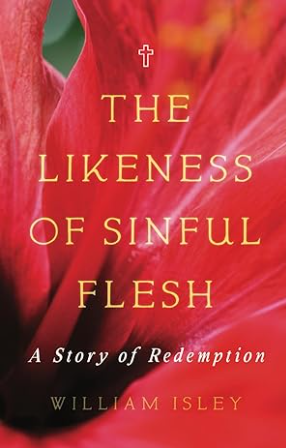As a reader, I feel that film adaptations of novels can be good but are often inferior to the written works for two reasons. First, given the film’s shorter length, the novel must be condensed and so we lose much of the story. Second, characters are not as well developed because we do not have access to their inner thoughts and motivations as we do in written works. Nevertheless, when movies use their visual and audio capabilities to good effect, they can possess an artistic power greater than that of the written word. A Haunting in Venice, the third of Kenneth Branagh’s adaptations of Agatha Christie’s famous detective Hercule Poirot, is an example of a film being superior to the novel.
Branagh borrows several of the characters and plot elements from Agatha Christie’s Hallowe’en Party, but so radically changes the story, characters, and setting that A Haunting in Venice is in many ways a completely different creation that allows him to explore themes of religious belief, the meaning of life, and society’s masking of reality. It also allows Branagh to take Poirot’s character in a different direction.
Rather than Christie’s English countryside, Branagh places the action in Venice. The movie opens with a scene of statuary, but the art works are covered in bird dung, the music is ominous, and it is a bit foggy. Suddenly a gull swoops down and attacks a pigeon. At that moment Poirot awakens abruptly. It was a dream. Thus, not reality, right?
Perhaps we should say that it is Poirot’s view of things, a perspective to which we should listen. Pigeons eating peacefully at St. Mark’s Square are subject to violence. Magnificent Venice may not be so magnificent. The opening is in striking contrast to the dramatic opening of The Sound of Music with its impressive views of Vienna and the sudden switch to the mountain valley scene and Julie Andrews singing “The Hills Are Alive with the Sound of Music.” Of course, all that beauty of 1930’s Austria is to be besmirched by the growing influence of Nazism, so maybe we should not think of that movie as quite so saccharine as many criticize it for being. Things are not always what they seem to be.
Indeed, a different view of life pushes its way to forefront in the next scene of A Haunting in Venice. We are told that this is 1947, two years after the end of World War II. Nuns are sweeping the steps of a church, gondolas are navigating the canals, and people are buying and selling at a lively market. The picture of the return to normalcy is highlighted by Vera Lynn’s marvelously hopeful singing of “When the Lights Go on Again All over the World,” and a bit from “Meet Me in St. Louis,” which will be significant for the hopes of a couple of young siblings.
And the lights are on again. People are returning to their happy everyday lives, but Poirot will have none of it. He is tending his garden, a piece of foreshadowing, and receiving pastries delivered by gondola to his residence. He goes forth to the market to make his purchase of carefully measured eggs, but accompanied by his guard who keeps petitioners away because Monsieur Poirot is no longer accepting cases. We then see the great detective in splendid isolation eating his gourmet breakfast alone on the roof top.
However, Poirot’s solitude is broken by the arrival of novelist, sometime collaborator in solving mysteries and “friend,” Ariadne Oliver. She criticizes Poirot for walling himself up into retirement, trading cakes for cases, and picking Venice to hide in, “a gorgeous relic sinking into the sea just like your mind without a challenge.” He is so cut off from the world that he does not even realize that it is Halloween. She persuades him to go to a party and expose a medium as a fake. In following her, Poirot enters a very shadowy world of masks concealing decadence, lies, hallucinations and, of course, murders with foundations as rotten and grotesque as the rat-filled basements of a Venetian palazzo.
A Haunting in Venice is a whodunit murder mystery, but it is also a macabre world tinged with horror. Even more, it raises philosophical questions about the meaning of existence. The medium, Joyce Reynolds asks Poirot, “You don’t believe in the soul’s endurance after death?” Poirot answers, “I have lost my faith.” When she says that is sad, the irritated Poirot responds, “Yes, it is sad. The truth is sad.”
Why is the truth sad? Poirot’s logic explains. He would welcome any honest sign of devils, demons, or ghosts. If there is a ghost, there is a soul. If there is a soul, there is a God who has made it. If there is a God, we have everything—meaning, order, and justice. However, he has seen too much of the world—crimes, two world wars, and “the bitter evil of human indifference.” There is no God, no ghosts, and no mediums. As the medium points out, the two of them are not so different. They know the dead too well. The doctor repeats a similar refrain. “You and me, we’re the same. Wherever death goes we follow.
Poirot’s highly successful detective method has brought him low. After a crime, by the application of order and method and “the slow extinguishing of my own soul,” he can find without fail or doubt whodunit. In the end of A Haunting in Venice, Poirot not only solves the murders but also exposes the various falsehoods of the participants. Have meaning, order, and justice prevailed? Is Poirot’s faith restored?
The ending is ambiguous. Maybe the spirits did intervene. Poirot neither affirms nor denies but only says that we all must live with our ghosts. He returns to his detective work, and symbolically moves a cup from the edge of a table to keep it from falling and breaking to pieces. The film ends with Vera Lynn’s “When the Lights Go on Again All over the World.”
This is the best by far of the Branagh three Poirot films, maybe because he is departing more from Christie and making his own artistic creations. Much of the charm and humor of David Souchet’s Poirot is gone. Branagh’s Poirot here is more like Wallander, the existentialist Swedish detective he portrayed. It makes for good movie viewing but leaves us with a question. Is there not an inherent contradiction in pursuing meaning, order, and justice without the God who the undergirds them? Regrettably, this is a fundamental human mystery that Branaugh’s Hercule Poirot cannot solve.


